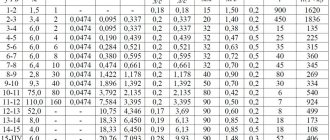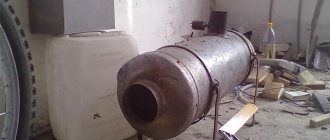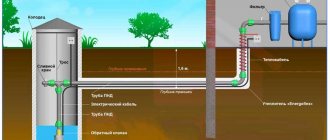What it is?
In the payment document, among others, there is a line - DHW.
This position assumes the cost of energy expended to provide residents with hot water according to established standards. This indicator combines the cost of hot water consumed in the system and the cost of heating it in accordance with approved standards.
Hot water in houses that have a centralized hot water supply is paid according to its consumption meter. But at the same time, the tariff for the supply of a cubic meter of water depends on the region where the supply and consumption of water occurs.
The tariff takes into account operating and administrative costs, the cost of water purification, as well as the energy spent on heating it to the regulatory level.
Economic indicators are established by the authorities of a given region and relate specifically to the consumption of hot water , which must necessarily comply with the characteristics of the standards.
If the water is actually colder than normal, then the user has the right to complain to the Criminal Code. Flow accounting can be carried out both using metering devices serving the entire house, and individually.
Two-component tariff for hot water supply: what is it?
In 2021, payments for hot water consumed by the population must be made according to a two-component tariff. Previously it was assumed that this would happen before 2018. Let's figure out what it is.
The concept of “tariff for hot water” as a single product is not used anywhere in the world - most often it is heated directly at the heating supply facility. But even where the practice of centralized supply of hot water still exists, the product is primarily the coolant that heats this water.
Following international experience, the Russian authorities introduced the so-called two-component tariff for hot water supply in 2013. The calculation of the payment for hot water according to the two-component tariff in the housing and communal services receipt in closed water supply systems is carried out based on the following components:
- the actual volume of cold water used, paid at the standard tariff for cold water;
- the actual amount of heat used to heat cold water. It is paid at a separate rate.
Simply put, the cost of hot water at the tap is determined by the prices of cold water and thermal energy to heat it.
The volume of resource consumed is determined by the hot water meter, and if it is missing, by the generally accepted consumption standard. Payment for water heating in utility bills is calculated according to the standard heat consumption used for heating.
In open water supply systems the following components are used:
- coolant;
- thermal energy for water supply purposes.
Currently, regional executive authorities are authorized to independently decide which principle for calculating the cost of hot water supply to use to determine the tariff in a closed system: one-component or two-component. By 2021 they must finally switch to a two-part tariff, and until then a special regulatory framework needs to be developed.
Where can I find the line?
The invoice-receipt for payment of housing and communal services (HCS) is drawn up in the form of a table. The left column lists the types of services, and their characteristics are given horizontally to the right. The second line in the table from the top is called “Hot water supply.
| Accrued | Unit change | Tariff\Size boards | Col. | Accrued | Benefit | To pay |
| Cold water supply | ||||||
| Hot water supply | M3 | 198,19 | 1,80 | 356,74 | 89,18 | 267,56 |
| Water disposal |
Often in an apartment building, residents see separately in their document how much they need to pay for the consumption (measured in cubic meters) of hot water (with characteristics that comply with the regulations) and the cost of heating their apartment. The payment for thermal energy is stated in these two lines of the receipt.
Component structure
In order to heat the water that enters a large city house, it is necessary to expend heat and electricity . Electricity is used by all kinds of auxiliary mechanisms - pumps, regulators, etc. The heat is used to heat a certain flow rate to the required temperature.
The sum of these two components is considered as thermal energy, for which residents must pay.
At the same time, you need to understand that not all of the invested energy reaches the end consumer; some of it is lost along the way - the water cools down in the pipes, there are leaks and similar troubles. But the consumer pays for all the energy expended.
As a result, the citizen pays all the supplier’s costs for heating water and delivering it to the apartment.

General data required for calculations

Therefore, devices for this parameter are selected in accordance with the tasks, the required volume and the allowable waiting time. So, for example, heating 15 liters to 60°C with a 1.5 kW heater will take about an hour and a half. However, for large volumes (for example, to fill a 100-liter bath) with a reasonable waiting time (up to 3 hours), a device 3 kW more powerful will be needed to bring the liquid to a comfortable temperature. To fully calculate the design power, it is necessary to take into account a number of parameters:
- Working resource of a household electrical network. The problem of “knocking out traffic jams” is especially pressing in secondary housing stock. Some residents, having encountered this problem (for example, when installing electric radiators), solved the problem by adding a separate cable or strengthening the wiring. However, a more universal recipe is to buy a water heater with medium or low energy consumption (usually storage-type devices). The difference between the number of kilowatts of the household electrical network and the total power of all household electrical appliances will give the value of the optimal power of the water heater that you need to strive for.
- The ratio of the power of the heating element (heating element) and the volume of the tank. A parameter that is more important for storage-type devices, in which water is consumed gradually, and the rate of its cooling becomes critical. To prevent a 1-kilowatt water heater from being purchased with 100-liter tanks, manufacturers provide an indicative table, where a 1-kilowatt device is designed for 15 liters, 1.5 kW – for 50, 2 kW – for 50-100, and 5 kW – for 200 - liter tank.
- Water flow rate per minute. The parameter is more important for instantaneous water heaters. In everyday life, the power indicators of such a heating device (taking into account the maximum resource consumption) are calculated by multiplying by two the number of liters of fuel consumption per minute. That is, if an average of 4 l/min is spent on running dishes, then the heating element should be 8 kW. If 8 l/min is consumed when taking a shower, then a 16-kilowatt heating element is needed. The calculations are complicated by the fact that the apartment uses 2 (and sometimes 3) water intake points at once. In this case, it is recommended to multiply the resulting value by one and a half times in calculations.

What does the amount consist of?
Commercial relations between suppliers of various types of energy and residents are formally determined by Agreements.
According to these documents, when paying, the following are taken into account and paid:
- water flow measured by a water meter on a hot pipe;
- energy spent on heating it;
- consumer benefits;
- the amount stated in the receipt was obtained as the product of the tariff for hot water and its consumption according to the meter, taking into account benefits.
If the apartment is not connected to central heating, but is equipped with an autonomous heating system, the apartment owner pays additionally for gas or electricity, depending on the type of water heater.
Pricing for hot water in apartment buildings
V.G. Semenov , General Director of JSC VNIPIenergoprom Association, President of the NP Energy Efficient City, Editor-in-Chief of the ENERGOSOVET magazine, Moscow
There were no serious problems with determining the cost of hot water before, during the absence of metering devices. Typically, two standards were used - specific water consumption per inhabitant and thermal energy consumption per cubic meter of water. Residents consumed water without thinking about saving, and heat supply organizations were satisfied with the standard.
But the time has come for instrumentation, and the unsolved centralized task of determining what hot water is is now being forced to be resolved in numerous courts, since with any standard one of the parties ends up losing. To understand the problem and create an energy-efficient model of economic relations with hot water, it is necessary to seriously understand it.
Hot water as a commodity consists of two goods: source water and thermal energy contained in the water (used to heat it). A hot water meter is an ordinary water meter installed at the entrance to the apartment. The main problem with a water meter is that it does not measure heat content. Even if you install a heat calculator and a temperature sensor, this will not be enough to correctly measure the amount of heat spent on heating, because
It is also necessary to measure the temperature of the initial cold water. And this can be done with different connection schemes at different points: in the basement of the house, at the central heating station, or even at the heat source. Therefore, the average temperature of the source water is widely used - in winter +5, and in summer +15 degrees, which corresponds to heat consumption of 0.055 and 0.045 Gcal / cubic meter. meter (at a hot water temperature of 60 degrees).
This understanding of hot water does not depend on the type of heating system, the type of heating point, and coincides with the understanding of a resident who is interested in what flows from his tap.
But in many houses, hot water circulation systems function normally and thermal energy in this case is needed not only to ensure the parameters of hot water pouring out of the tap, but also to compensate for losses in heated towel rails, risers and rapidly spreading underfloor heating systems, which are often connected to the circulation circuit DHW.
It has long been customary to attribute these costs of thermal energy to hot water, by introducing increased standards for heating a cubic meter of water. So another, already third, component appeared in the hot water.
The right to set standards was given to municipalities, which, despite the presence of methodological instructions from the Ministry of Regional Development of the Russian Federation, sometimes began to set a standard even lower than the original one, which did not take into account circulation.
The situation became even more aggravated due to the requirement of the Sanitary and Epidemiological Supervision Authority to increase the temperature of hot water to 60 degrees (SNiP required no more than 55 degrees) - the heat content in a cubic meter of water increased, and the volume of its sales, on the contrary, decreased. It was necessary to introduce a compensatory increase in the standard, but this, in turn, led to an increase in the tariff for hot water, which was not politically welcomed.
The massive installation of metering devices and the use of modern water taps further aggravated the situation - people reduced their hot water consumption, while circulation losses remained unchanged and began to account for up to half of the heat consumption for heating directly consumed hot water. In large cities, disagreements began to amount to hundreds of millions of rubles.
Let's consider options for different connection schemes.
Option 1 - individual heating point (ITP)
The thermal energy meter is installed, as a rule, only at the entrance to the building up to the heating point and cannot separately show the amount of thermal energy spent on heating tap water and heating.
How to calculate it yourself: step-by-step instructions
To independently calculate the amount of the next payment for hot water supply, you need to use the formula:
Pi = ViP x Tcr, where:
- ViP is the water consumption for the payment period;
- Tkr is the value of the tariff for hot water supply;
- Pi — — payment for the control period.
Calculation example
The following indicators were used for the calculation:
- The amount of hot water used, measured by the water meter for February 2021, was 5 cubic meters (m3) (ViP - in the formula).
- The tariff for the region is 150 rubles. per 1 cubic meter (m3) (Tcr - in the formula).
The rent for the apartment is calculated as follows: 5 m3 x 150 rubles. = 750.00 rubles. The fee for hot water supply to an apartment is RUB 750.00.










